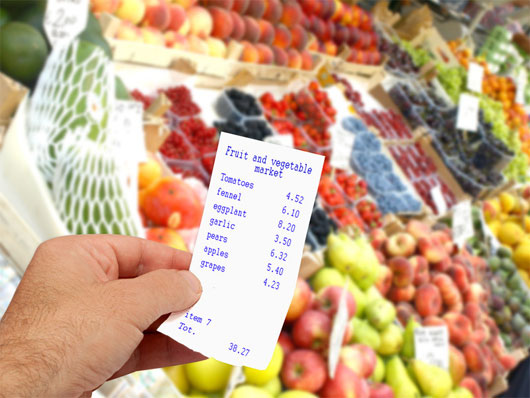Rising vegetable prices increase obesity
(scienceinfo.net) - Expensive fresh fruits and vegetables are associated with body mass index (BMI) in children in low-income and middle-income families, according to a study. New rescue.
The study also identified a small link between the higher prices of carbonated drinks and childhood obesity in children. This study was conducted by American University (AU) researchers and published in Pediatrics.
'There is a small, but important, link between the price of vegetables and the BMI of children higher,' said Taryn Morrissey, lead author of the study and an associate professor of public administration and policy at Public Affairs School (SPA - School of Public Affairs) of the University of AU said.
Morrissey said that as the prices of fruits and vegetables increase, households can buy less vegetables and replace them with cheaper foods, which may not be as healthy and high in calories. than.

'These relationships are driven by price changes of fresh fruit and vegetables more than frozen or canned vegetables' , says Alison Jacknowitz, SPA co-author.
BMI is a practical indicator of the overall fatness of the human body, often related to the risk of life-threatening dangerous diseases. More than 26% of children aged 2 to 5 years across the United States are thought to be overweight, confirmed when they had a BMI of 85th%, in 2009 and 2010, up from 21%. a decade earlier.
In children, the calculation of BMI is similar to adults. But instead of calculating the threshold for underweight or overweight, BMI groups allow comparison of children of the same age and sex with each other. For people 20 years of age and older, the BMI below the 5th region is considered to be underweight and above 95th is considered obese.
Researchers have combined the data of the study named Early Childhood Longitudinal Study-Birth Cohor t, a national-scale study of children from the neonatal period to 5 years old, with data on real prices The product is provided by the Council for Community and Economic Research (C2ER) Cost-of-Living Index.
This study focuses on households with incomes below 300% of the federal poverty line or a family earning about $ 70,650 in 2013.
In general, food prices have tended to decrease in recent decades, especially the prices of snacks and soft drinks, the true price of restaurant meals and fruits and vegetables have increased. Fruit and vegetable prices have increased by about 17% since 1997 and in 2003 alone. Children living in areas with higher vegetable and fruit prices have a higher average BMI than those who live in areas with These foods are cheaper.
A surprising result is a higher link between fast food prices and increased obesity. Morrissey said that local fast food stores are free to raise prices more than grocery stores to meet the higher demand for their products.
The study also identified a small association between higher prices for freshwater and lower child obesity. The study found no link between food prices and food security, meaning families were forced to cut down on meals or remove some expensive foods from the menu.
- Funny influence on gasoline prices increased
- Vegetable fuel throne before the oil crisis
- Oil prices rise, the number of deaths decreases
- Deep cold, many items race to increase prices
- 6 new obesity genes discovered
- Consumers are wary of stimulating bean sprouts
- The Thai government 'declared war on sugar' to reduce obesity
- Some of Samsung's leaders were arrested for rising DRAM prices
- Chewing gum is prone to obesity
- Eating more is the main cause of increased obesity in the United States
- Some vegetable oils increase the risk of heart disease
- Vegetable-free vegetable plant in China
 Green tea cleans teeth better than mouthwash?
Green tea cleans teeth better than mouthwash? Death kiss: This is why you should not let anyone kiss your baby's lips
Death kiss: This is why you should not let anyone kiss your baby's lips What is salmonellosis?
What is salmonellosis? Caution should be exercised when using aloe vera through eating and drinking
Caution should be exercised when using aloe vera through eating and drinking